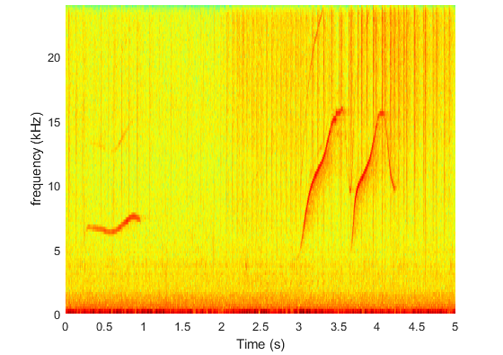Passive Acoustic Monitoring (live data streams)
Subsea Passive Acoustic Monitoring (PAM)
The SEAlab team develops hardware, software and signal processing algorithms to autonomously detect underwater acoustic signatures from marine mammals (e.g. dolphins) and propulsion noise from surface and subsea vehicles. We specialise in computationally light detection algorithms that can run on very low cost and low power devices (edge computing) for long periods at sea. These devices report detection data in real time via wireless terrestrial, satellite or underwater acoustic communication networks, achieving practical examples of the Internet of Underwater Things (IoUT).
Recent examples of this are live dolphin click (echolocation) and whistle (calls) detectors currently operating in the North Sea. These devices are installed in the North Sea and detect clicks/whistles emitted by animals within a radius of up to 3km of the device. Information on detected click trains or whistles is transmitted back to shore and displayed live on a web interface:
Live Dolphin Click Detector Data from Blyth, Northumberland
Live Dolphin Whistle Detector Data from Blyth, Northumberland
Dolphin Click trains are displayed with inter click interval (ICI), with low ICI values indicating rapid click trains and feeding activity, and magnitude, which gives an broad indication of the distance from the detector. Dolphin whistles are displayed in terms of frequency gradient and magnitude and a time-frequency plot appears for a subset of detected whistles allowing the recurring "signature" whistles to be identified.
Autonomous PAM devices developed by the team have proven the ability to operate for up to 6 months at sea without maintenance, with only a small battery capacity of 4 x 1.5V akaline C cells.

